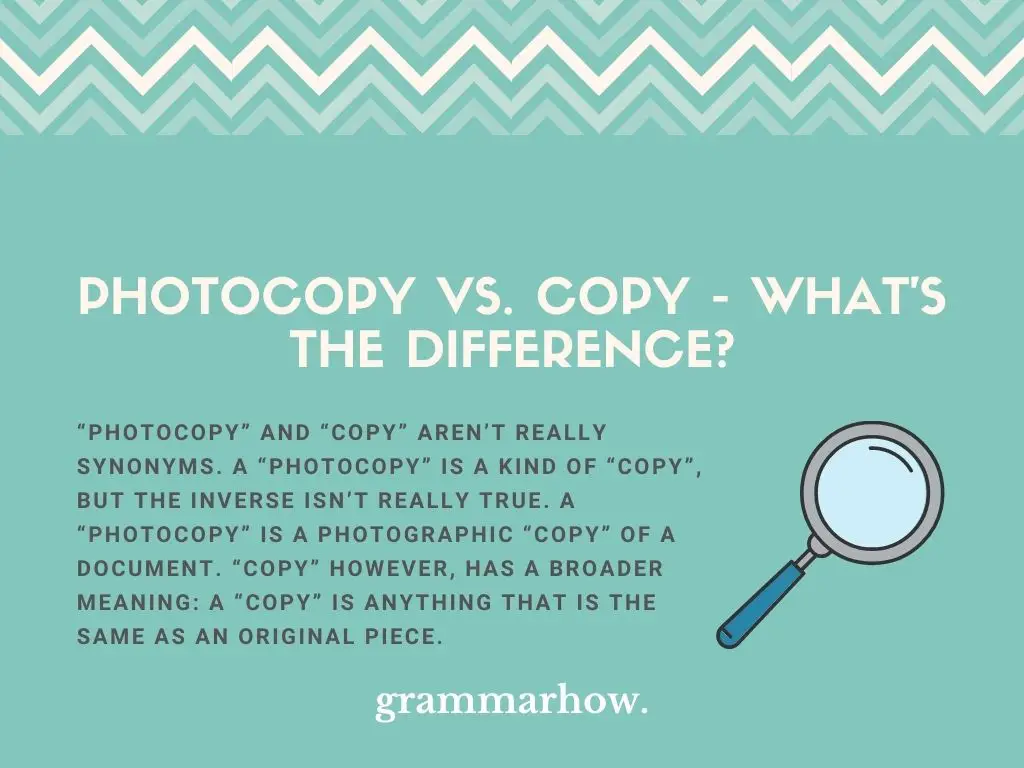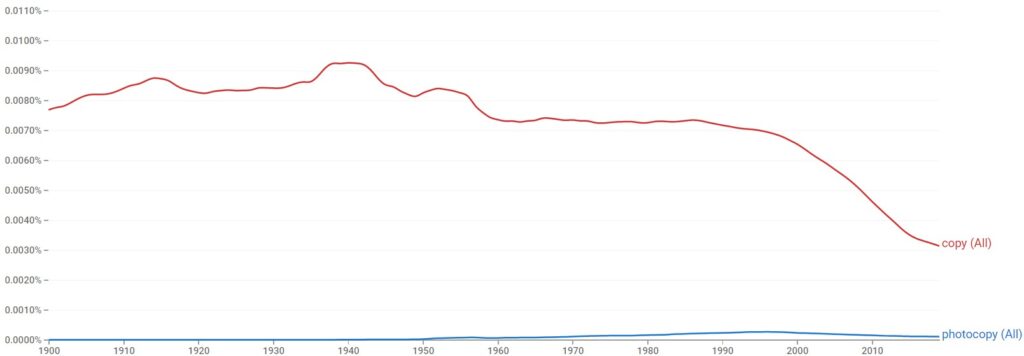“Photocopy” and “Copy” are words that sometimes seem to be used as synonyms. But are they? We want to take a deep dive into their meanings, to understand how and when those words should be used.
Let’s find out the difference between “Photocopy” and “Copy”.
Photocopy vs. Copy – What’s the Difference?
“Photocopy” and “Copy” aren’t really synonyms. A “Photocopy” is a kind of “Copy”, but the inverse isn’t really true. A “Photocopy” is a photographic “Copy” of a document. “Copy” however, has a broader meaning: a “Copy” is anything that is the same as an original piece.

Let’s see some examples, before looking at each word separately:
- I don’t carry the original, but I have a photocopy of my driver’s license.
- I don’t carry the original, but I have a copy of my driver’s license.
- Anna made a copy of the dress she saw at the Oscar, to wear for prom.
- Anna made a photocopy of the dress she saw at the Oscar, to wear for prom. (incorrect)
The first set of examples indicates that the subject has a “Photocopy” of their driver’s license at hand. As you can see, the word “Copy” also works in that context, because a “Photocopy” is a type of “Copy”.
The question you should ask yourself when debating which of the words to use is how specific you wish to be in your communications.
The second set of examples talks about a “Copy” of a dress. A lady saw a dress and decided to make a “Copy” of it for a party – in other words, a dress of her own, that looked the same as the original.
In that scenario, “Photocopy” wouldn’t work, obviously, because the “Copy” she made is physical and meant to be worn. It’s not a photographic “Copy” and, therefore, the use of the word “Photocopy” is incorrect here.
Photocopy
A “Photocopy” is a copy of a document made on the photocopier. Instead of printing a new “Copy”, for example, the subject chooses to use the photocopier to make a “Photocopy”. This is a very specific word that indicates a very specific kind of “Copy”.
The definition we find in The Cambridge Dictionary agrees with the one provided above, adding that “Photocopy” can be used as a verb, to indicate the action of “being copied using a photocopier”.
Let’s go over some examples:
- Can you send me a photocopy of the document, please?
- I’ll need a photocopy of your passport.
- Do you have a photocopy of your birth certificate?
- Please make five photocopies of pages 4 to 7, for the team.
- The library is offering free photocopying services.
Copy
A “Copy” is something that has been made exactly like something else. It could be a document or file, or any item (like an object or a piece of clothing). Literally, anything can have a “Copy” of it made.
In The Cambridge Dictionary we find the following definition: “to produce something that is exactly like another thing, or to do something meant to be like someone or something else”.
Take a look at some examples below:
- He just copied and pasted the whole article.
- She only passed the test because she copied from the girl next to her.
- Make a copy of all these documents for safekeeping.
- You should have a copy of the agreement.
- Do you have your own copy of the novel?
Which Is Used the Most?
Considering that a “Photocopy” is a kind of “Copy”, we can guess which word is used more often. We remain curious, though.
Let’s take a look at the graph from Google Ngram Viewer below, to find out which word is used more frequently, ”Photocopy” or “Copy”.

As expected, “Copy” is used much more often than “Photocopy”. The reason why we thought this was exactly what we’d see is that “Photocopy” indicates a very specific kind of “Copy” and has quite a strict use.
Final Thoughts
“Photocopy” is a “Copy” made using a photocopier machine. Every “Photocopy” is a “Copy”. However, “Copy” has a broader meaning and can indicate anything that is made to look like something else. When talking about a “Photocopy” you can interchange and use the word “Copy” instead.

Martin holds a Master’s degree in Finance and International Business. He has six years of experience in professional communication with clients, executives, and colleagues. Furthermore, he has teaching experience from Aarhus University. Martin has been featured as an expert in communication and teaching on Forbes and Shopify. Read more about Martin here.
